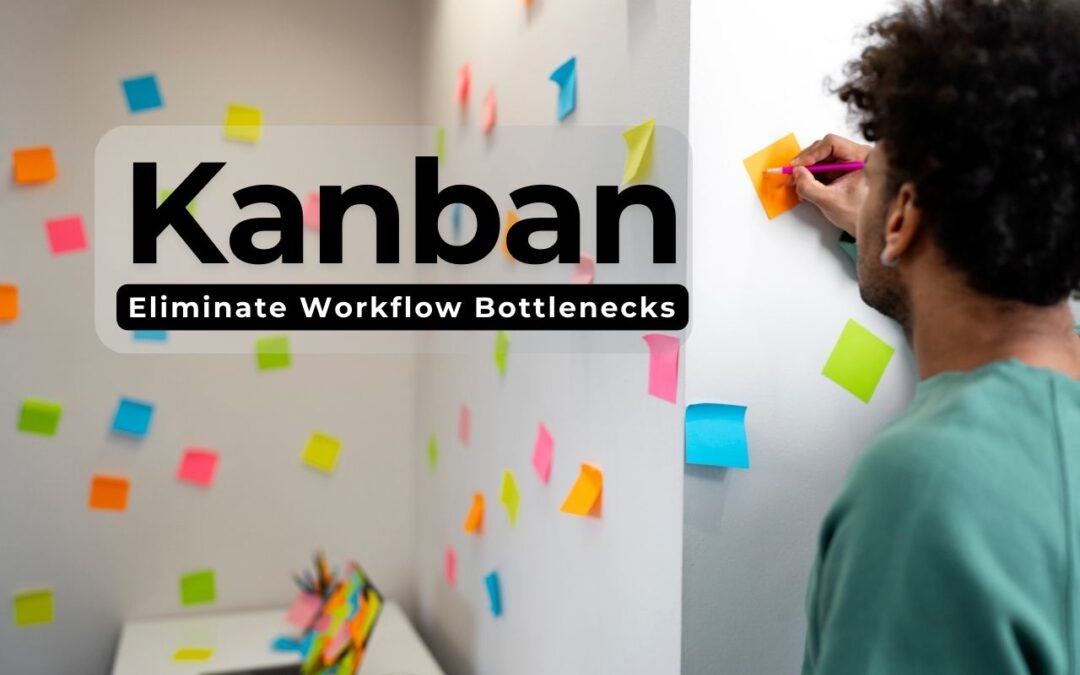In the world of project management and operational efficiency, businesses are constantly looking for tools and methodologies that enhance productivity and streamline workflows. One of the most popular and effective systems to achieve this is Kanban. Developed from lean manufacturing practices in Japan, Kanban has evolved into a powerful visual tool used across industries to improve work processes and eliminate inefficiencies.
In this comprehensive guide, we will explore how Kanban helps boost productivity, identify and eliminate workflow bottlenecks, and create a more efficient, agile working environment.
What Is Kanban?
At its core, Kanban is a visual workflow management method that uses a board and cards to represent tasks and their progress. The term “Kanban” is derived from the Japanese word for “signboard” or “billboard.” It was originally developed by Toyota in the late 1940s as a scheduling system to improve manufacturing efficiency.
In modern contexts, Kanban is used in software development, marketing, HR, and virtually any industry that involves managing tasks and projects. It helps teams visualize their work, limit work in progress (WIP), and maximize efficiency.
A typical Kanban board includes columns such as:
- To Do
- In Progress
- Review
- Done
Tasks are represented by cards that move across these columns as they progress through various stages of completion.
The Core Principles of Kanban
- Visualize Work: By visualizing tasks on a board, teams can see the status of every task at a glance, which enhances communication and transparency.
- Limit Work in Progress (WIP): Limiting WIP ensures that teams do not take on more work than they can handle, which improves focus and reduces multitasking.
- Manage Flow: Monitoring how tasks move through the workflow helps identify inefficiencies and improve delivery time.
- Make Process Policies Explicit: Clear rules and guidelines help team members understand how work is done.
- Implement Feedback Loops: Regular reviews and feedback sessions improve collaboration and process improvements.
- Improve Collaboratively, Evolve Experimentally: Teams are encouraged to continually analyze and improve their workflow using data and feedback.
How Kanban Boosts Productivity
1. Enhances Visibility and Accountability
Kanban provides a real-time view of all tasks. Team members can easily see what they need to do, what others are doing, and what is delayed. This clarity eliminates confusion and miscommunication, which are often productivity killers.
2. Encourages Focus Through WIP Limits
By limiting the number of tasks a team or individual can work on simultaneously, Kanban prevents context switching. This focus leads to higher quality work and faster completion times.
3. Enables Quick Identification of Bottlenecks
If a task remains stuck in a particular column for too long, it’s a clear sign of a bottleneck. Kanban makes these issues visible so they can be addressed before they escalate.
4. Promotes Continuous Improvement
Teams regularly assess their performance and look for ways to optimize workflow. The use of metrics like cycle time and lead time provides data-driven insights that support improvement.
5. Supports Better Prioritization
Kanban boards make it easy to see which tasks are most urgent and important, helping teams prioritize effectively. This reduces time spent on less valuable work.
6. Enhances Collaboration and Communication
With everyone looking at the same board, discussions become more focused and productive. Whether in stand-up meetings or sprint planning sessions, Kanban improves dialogue and mutual understanding.
7. Flexibility and Scalability
Kanban can be used by small teams or scaled across entire organizations. Its adaptability means that teams can tailor their boards and workflows to fit specific needs and goals.
Eliminating Workflow Bottlenecks with Kanban
Bottlenecks occur when a part of the process is overloaded, causing delays. Kanban is specifically designed to identify and address these issues.
1. Visualizing Blocked Tasks
Most Kanban tools allow users to flag tasks as “blocked” or stalled. These flags make it easy to identify which parts of the process are causing slowdowns.
2. Measuring Cycle Time and Lead Time
- Cycle Time is the time it takes for a task to move from start to finish.
- Lead Time is the time from task creation to completion.
By analyzing these metrics, teams can spot where delays are happening and take corrective actions.
3. Using Cumulative Flow Diagrams (CFDs)
CFDs help teams visualize work-in-progress, completed tasks, and bottlenecks over time. If the “In Progress” section of the chart grows too large, it indicates a bottleneck.
4. Setting WIP Limits Strategically
By adjusting WIP limits in specific workflow stages, teams can prevent overload. For example, if code reviews are slowing down the process, limiting the number of tasks allowed in that column will naturally push the team to resolve them faster.
5. Root Cause Analysis
When a bottleneck is identified, Kanban encourages teams to dig deeper and understand the root cause. This might involve inadequate resources, unclear requirements, or inefficient tools.
6. Feedback Loops and Retrospectives
Regular retrospectives help teams reflect on what’s working and what’s not. These feedback loops are essential for identifying persistent bottlenecks and developing strategies to eliminate them.
Real-Life Use Cases of Kanban
1. Software Development
Agile software teams use Kanban to manage feature development, bug tracking, and release cycles. It provides transparency and ensures timely delivery.
2. Marketing Teams
Kanban helps marketing teams manage campaigns, content creation, and events. It provides a clear view of deadlines, approvals, and publishing schedules.
3. HR and Recruitment
From candidate sourcing to onboarding, HR departments use Kanban boards to track hiring pipelines and improve recruitment efficiency.
4. Customer Support
Customer service teams use Kanban to manage support tickets and ensure timely responses. It helps in prioritizing high-impact customer issues.
5. Manufacturing and Inventory Management
In manufacturing, Kanban cards are used to trigger replenishment and track production status, reducing waste and downtime.
Best Practices for Implementing Kanban
1. Start with What You Do Now
Kanban does not require a complete overhaul. Begin by mapping your existing process on a Kanban board.
2. Involve the Team
Involve all team members in setting up and managing the Kanban board. This promotes ownership and accountability.
3. Keep It Simple
Start with basic columns and gradually introduce complexity as needed. Avoid over-engineering the board.
4. Review and Adapt Regularly
Hold regular meetings to review board status, discuss challenges, and update WIP limits or workflow stages.
5. Use Digital Tools When Needed
For remote or hybrid teams, digital Kanban tools like Trello, Jira, and Monday.com provide flexibility and accessibility.
6. Focus on Flow
Always strive to maintain a smooth and steady flow of tasks across the board. A disrupted flow is a sign of hidden inefficiencies.
Conclusion
Kanban is more than just a visual task board; it’s a powerful methodology for managing work and improving team performance. By enhancing visibility, promoting focus, and enabling continuous improvement, Kanban helps teams boost productivity and eliminate workflow bottlenecks.
Whether you’re managing a small project or running a complex operation across multiple departments, Kanban provides the structure and flexibility needed to succeed. Embracing its principles and practices can lead to a more agile, efficient, and collaborative work environment, an essential foundation for any organization aiming to thrive in today’s fast-paced world.













